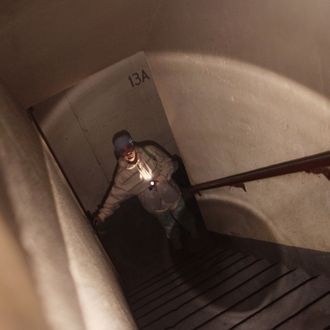
For those who lost more during Hurricane Sandy than the contents of their pantry, the suffering has not yet abated, even after most of New York City put the storm behind them. In Coney Island, the Rockaways, and Red Hook, more than 15,000 public housing units still lack heat, hot water, or electricity, according to Steven Banks of the Legal Aid Society. “We’re into the second week of this,” he said in a New York Times editorial today, “and there is no real urgency to get it fixed … No can-do New York attitude here.” But Mayor Bloomberg insists those people are not forgotten, explaining on the radio this morning that power should be back by tonight, with heat to follow by early next week.
The Times, which calls on the mayor to “redouble his efforts to help those most in need,” reports:
Mr. Bloomberg said Thursday that 70 percent of these buildings now have heat and hot water and 82 percent have electricity. But that leaves 120 buildings and the people who live in them without heat or hot water and 72 buildings and their residents without electricity.
Whatever the precise numbers, by any accounting, life for these people is grim. On Wednesday afternoon, in the Far Rockaways, hundreds lined up for as much as three hours in the cold to get hot food promised by a makeshift delegation of volunteers. The multiple government agencies promising help were nowhere to be seen.
While the weather is starting to warm up again, the midweek nor’easter certainly did not help, and Bloomberg’s recommendation that those at risk from the cold and extreme conditions “go somewhere warm” is easier said than done.
FEMA, meanwhile, is deploying hundreds of mobile homes to hard-hit areas in New York and New Jersey as just one attempt to assist the 317,000 people who have registered for financial aid since the storm. More than 101,000 people have been deemed eligible for temporary housing programs and more than 56,000 for its individual and households programs, the Associated Press reports, “which provides money for renting a new place or housing repairs.”
The mobile homes, though, have bad associations. “When you say FEMA trailers, you harken back to Katrina,” said FEMA administrator Craig Fugate, who stressed that the mobile homes are different. “I think the majority of folks will be helped with rental assistance, which is faster and puts more money in the economy,” he added.





























